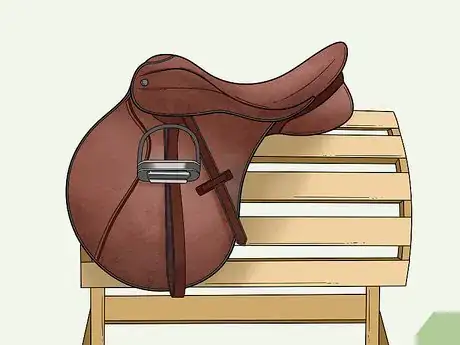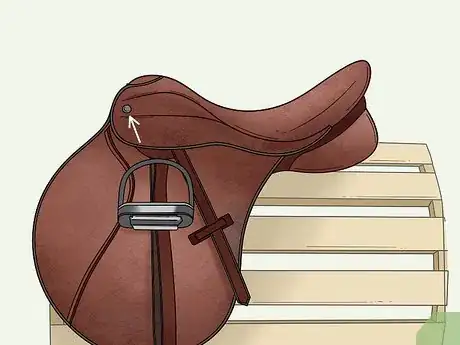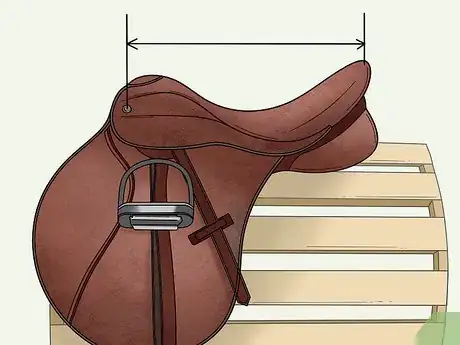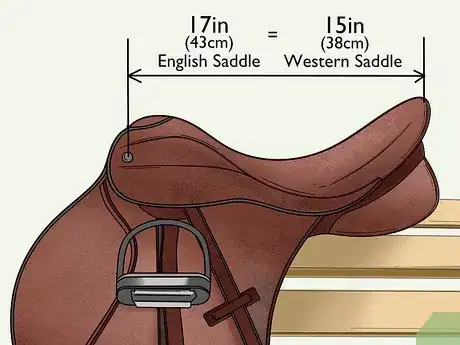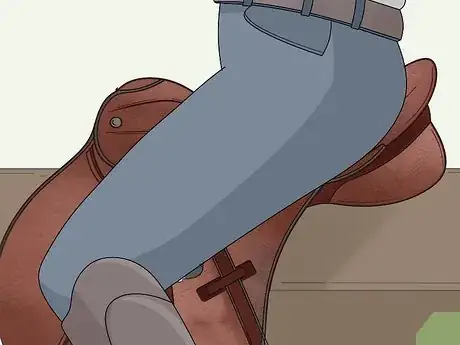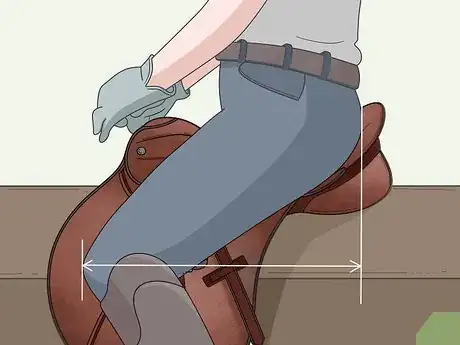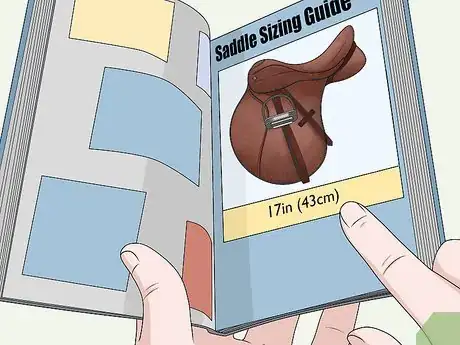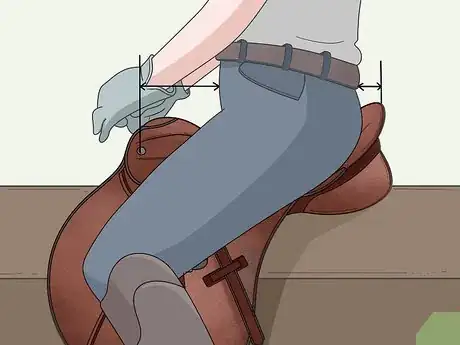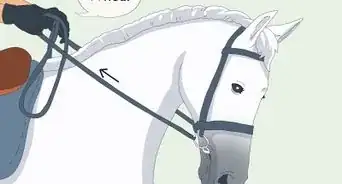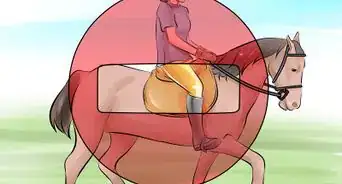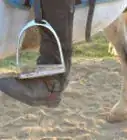This article was co-authored by wikiHow Staff. Our trained team of editors and researchers validate articles for accuracy and comprehensiveness. wikiHow's Content Management Team carefully monitors the work from our editorial staff to ensure that each article is backed by trusted research and meets our high quality standards.
There are 7 references cited in this article, which can be found at the bottom of the page.
This article has been viewed 12,453 times.
Learn more...
Measuring an English saddle for its size is a simple task that can improve the rider's capability to ride effectively. A correct saddle fit not just for the horse but also the rider can allow the team to complete tasks such as jumping, hunter seat, and equitation with greater ease and physical comfort. With just a tape measure and a saddle to measure, the task of measuring the saddle can be completed in just minutes.
Steps
Measuring the Seat with a Measuring Tape
-
1Place the saddle down with the seat facing upwards. Set the saddle down on a saddle rack so it’s positioned as if you’re going to ride it. Make sure the seat is facing up and is even to make measuring it easier.[1]
-
2Find the nail heads on either side of the pommel. The pommel is the front part of the saddle that’s raised, creating a dull point. On either side of the pommel are nail heads. Choose the nail head on the left or right side to use as your measurement point.[2]
- It doesn’t matter which nail head you choose.
Advertisement -
3Measure from a nail head to the center of the saddle’s back. The back of the saddle is called the cantle. Position the end of a tape measure at a nail head and stretch it across the saddle to the center of the cantle.[3]
- Since the nail head isn’t perfectly centered, your measurement will be at a diagonal.
- Always measure to the middle of the cantle so you get an accurate measurement.
-
4Use this number as the seat’s measurement in inches. For example, if you measured 17 inches (43 cm) from the nail head to the center of the cantle, it’s a 17 in (43 cm) English saddle. If needed, round up to the nearest half-inch to get the right size.[4]
- A 17 in (43 cm) English saddle is the same size as a 15 in (38 cm) western saddle because English saddles are usually 2 in (5.1 cm) longer.
Figuring out the Rider’s Saddle Size
-
1Sit on a saddle to get an accurate measurement, if possible. Since you're measuring your saddle size, you'll get the most accurate measurement if you're able to sit on a saddle while using the measuring tape. Sit up straight on the saddle with your shoulders relaxed. Place your feet in the stirrups if possible so you're sitting just as you would if you were riding a horse.[5]
- If you don't have a saddle handy to sit on, stand with your knees slightly bent and your feet turned out to imitate your position in a saddle. Keep your back straight too.
- If you're able to sit straddled across something like a wide couch armrest, this is a good alternative.
-
2Measure from your knee to the back of your hips using a measuring tape. Start the measuring tape on the outside of your thigh, right at the front of your knee. Continue measuring along the side of your thigh until you get to the back of your hips. Write down the measurement so you don’t forget what it is.[6]
- Round the measurement to the nearest half-inch.
- Ask a friend or family member to measure for you so you get the most accurate measurement.
-
3Use a saddle manufacturer’s sizing guide to choose the right saddle for you. Each saddle manufacturer will have a guide or chart that you can use to convert your own measurements to the saddle size that fits you. Most saddle sizes are 2 inches (5.1 cm) less than your own size measurement. Find your own measurement on the manufacturer's chart to see the corresponding saddle size that's right for you.[7]
- For example, if you measured 19 in (48 cm), the saddle manufacturer might suggest a 17 in (43 cm) seat.
- Your personal measurements are important for picking out a saddle size because your thighs and legs need to be in the proper position so you can ride correctly while making sure you're not slipping around in your seat.
-
4Test out a saddle in person to check that it fits correctly. The best way to figure out if a saddle is right for you is to sit in it as if you were about to ride. When you’re sitting on the saddle, check to make sure there’s at least 2 fingers-worth of saddle in front of you and behind you so that you have plenty of space.[8]
- Position yourself in the deepest part of the saddle when you’re sitting in it so you get the best feel for it.
References
- ↑ https://www.youtube.com/watch?v=S8WLaH5Y-fk&#t=8s
- ↑ https://www.youtube.com/watch?v=S8WLaH5Y-fk&#t=48s
- ↑ https://www.horsetalk.co.nz/2016/12/27/new-saddle-christmas-free-fitting-guide/
- ↑ https://www.youtube.com/watch?v=UWQE3K7Q4cA#t=19s
- ↑ https://www.youtube.com/watch?v=kooVdnjNX6o#t=30s
- ↑ https://www.horsetalk.co.nz/2018/03/31/leg-length-riding-position/
- ↑ https://www.sportsrec.com/196002-how-to-determine-saddle-seat-size.html
- ↑ https://www.horsetalk.co.nz/2016/12/27/new-saddle-christmas-free-fitting-guide/
